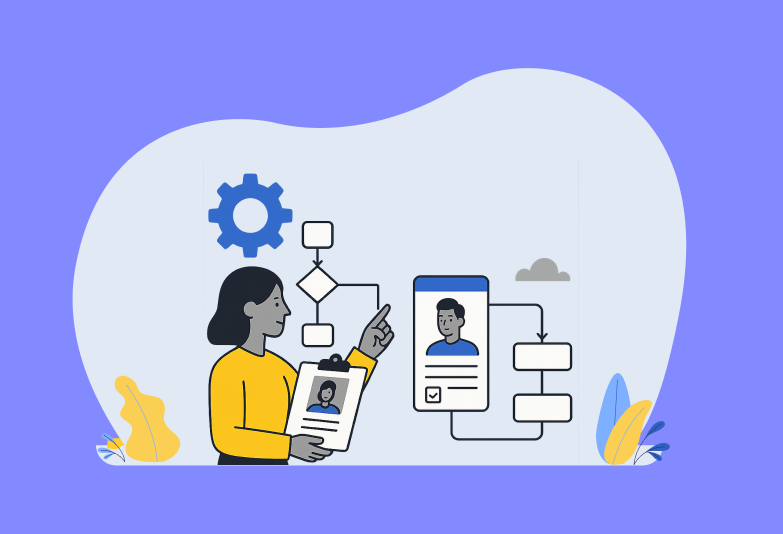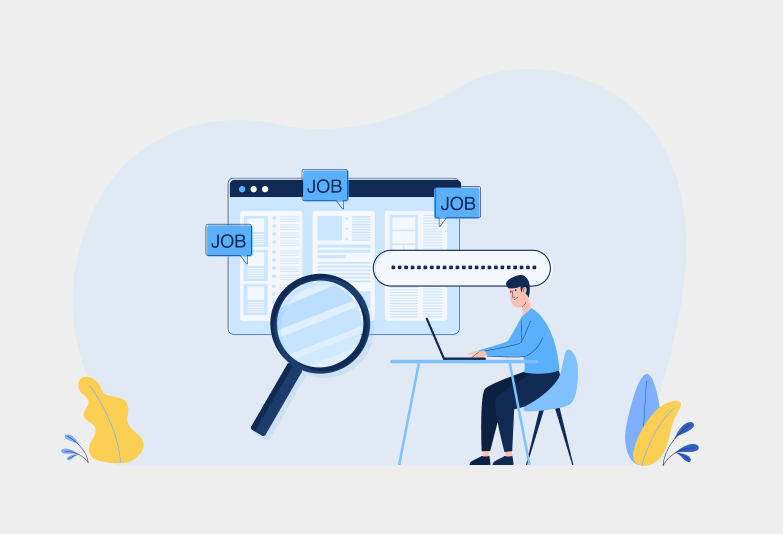Kevin McHenry brought Cricca’s Italian Deli back from the brink of failure when he bought it in 2016. Five years later, they’re a thriving business with a huge community following—but that doesn’t mean it’s always smooth sailing. What’s their biggest struggle?
“Employees,” Kevin says. “It is hard to find good employees. That is my biggest challenge from day one to now.”
And hiring employees is just the tip of the iceberg. Kevin cites staffing as his main expense, something that’s true for many businesses. That expense compounds in businesses with high turnover that are constantly having to recruit and train new staff.
This isn’t a concern unique to food service. Filling open positions with reliable workers is crucial for success in any industry. In this article, we’ll identify 5 types of employees businesses today should be looking for, with tips on how you can get them to join your team.
Type 1: Intrapreneurs.
Successful entrepreneurs are often visionaries. They don’t just see business trends and opportunities—they seize them through product and process innovations that improve on existing models (or create completely new ones).
Someone who serves this role within an existing company is an intrapreneur, and while they’re an especially valuable type of employee for tech businesses, they can help companies across industries find new ways to provide value for their customers.
Intrapreneurs are risk-takers who aren’t afraid to speak up and take charge. While this can be intimidating for more conservative companies, it also makes them excellent candidates for leadership. They’re capable of leading teams even from the employee level, raising the creativity and productivity of coworkers to their high level.
The trick is keeping them engaged so they stick around long-term. Their willingness to take risks means they’re the most likely of all the employee types to bail if they’re not given a work environment where they can thrive.
Hiring Hack: Consider candidates from all professional backgrounds.
Intrapreneurs are knowledge-hungry and often have diverse experience and interests. Many have experience as freelancers or entrepreneurs or have switched paths mid-career. If you screen out candidates for lack of industry experience, resume gaps, or other traditional “best practices”, you’ll miss these potentially valuable employees.
To attract intrapreneurs, Kortivity CEO Jason Burns suggests developing a relationship with candidates before you try to hire them. As he says, “Intrapreneurs are driven more by passion than money, so your goal is to find someone whose passion matches up with your business’ mission.” Get the intrapreneur excited about your mission and they might even ask you for a job.
Type 2: Progress drivers.
In a study published on Harvard Business Review, Suzanne M. Johnson Vickberg describes drivers as logic-oriented workers who excel at solving problems and generating business momentum. Like intrapreneurs, they’re curious and results-oriented, but they’re more focused with a better eye for details.
In other words, an intrapreneur innovates and helps your business evolve, while progress drivers perfect those new concepts and make sure those innovations work in the real world.
Progress drivers are often “self-managing” in the sense that they don’t often need to be told what to do. They can pose a challenge in more collaborative workplaces, however. Drivers are easily frustrated by indecision and distractions from coworkers, and can have a tendency to dominate brainstorming discussions.
The flip side of this is that progress drivers tend to excel in remote work environments where they get full control over their space and can focus completely on their tasks.
Hiring Hack: Advertise (and deliver) workplace autonomy.
There’s a strong overlap between progress drivers and type-A personalities, especially those who lean more toward the introverted side of the spectrum. They know how they do their best work and want to work for a company that can provide that environment (or at least stay out of their way so they can create it for themselves).
Flexibility and agency are the top draws for a progress driver. They thrive in remote and hybrid offices where they can choose when and where to work. In a traditional office, they look for a focused, dedicated team where everyone carries their fair share of the workload.
Type 3: Team guardians.
In a sense, team guardians are the opposite of progress drivers and intrapreneurs. They value stability, structure, and order, and are highly risk-averse. Their approach to problem solving is more methodical and they’re much more comfortable working from a plan than innovating on the fly.
Guardians are pragmatic and loyal to both their company and their coworkers. This makes them excellent leaders in collaborative workplaces, able to effectively synthesize ideas to plan practical, actionable solutions.
More innovative personality types sometimes see guardians as creativity-squelchers who respond to innovation with a laundry list of “what ifs” and potential problems. Conversely, guardians get frustrated by coworkers who generate ideas without a practical plan to implement them.
While this dichotomy can lead to conflicts, it can also be extremely valuable. After the drivers and intrapreneurs in your team generate ground-breaking ideas, guardians are the ones best able to execute them in the real world.
Hiring Hack: Prove your employee loyalty.
More than the other types, guardians crave stability. They want a long-term work environment where they can grow with the business.
Benefits that show you’re committed to employee retention will be most appealing to guardians. This includes investing in employees’ professional development and advancement opportunities, along with financial benefits like 401(k) matching.
Your company’s mission can be a big factor here, too. A shared sense of purpose is one of the most-cited reasons employees stick with employers. Guardians will be more drawn to companies that share their values, where they can feel like active contributors to your long-term goals. They’re more likely to enjoy stability and structure and may want to leverage technology like online course platforms for training and education.
Type 4: Team builders.
Another crucial employee type for collaborative businesses is the team builder. Builders normally fall under the integrator work style identified by Vickberg, and have similar strengths: they’re excellent communicators with high emotional IQ who bring people together and focus them toward a shared goal.
Builders hate conflict and aim to find consensus in brainstorming and collaboration sessions. This can make them excellent mediators between guardians and innovators.
Even if they’re not the leader by title, a builder will quickly become the heart of the team. Since they’re highly empathetic and relationship-driven, they make friends easily with their coworkers and can help introverted personalities feel more integrated and included.
Their empathetic nature also makes builders more susceptible to burnout from stress and anxiety. They’re the canaries in the coalmine for a toxic workplace and can become disengaged quickly in negative, conflict-riddled work environments.
Hiring Hack: Build a relationship with candidates.
An impersonal, automated application process is a turn-off for a builder. The more opportunities they get to interact with real humans, the more interested they’ll be in your company. Targeted outreach messages and one-on-one engagement can help you personalize your recruitment process to attract these workers.
Consider ways you can loop your employees in on your recruitment efforts. Employee referrals or testimonials can be an excellent way to attract builder types, giving them more insight into the team they’ll be joining.
Type 5: Data analysts.
In a sense, data analysts are the goalkeepers of your business. Your innovators can only feel safe playing the field and scoring points because they know someone’s back there keeping an eye on the goal.
The Hired Guns identifies the office analytic as one of the 5 key worker types in the modern world. They’re also one of the most overlooked because they tend to be introverted and independent, more interested in reviewing information and evidence than collaboration or coming up with new ideas.
This might make it sound like analytic workers have no place in a growth-oriented workplace, but in fact the opposite is true. Focusing on data lets office analytics identify developing issues or process improvements that employees focused on the big picture often miss.
Hiring Hack: Feed their need for facts.
Data analysts won’t be swayed by broad claims about your values and company culture. They’d rather look at the facts themselves and draw their own conclusions. Make job postings detailed and specific, outlining what you’re looking for in a candidate and what you offer in return.
Going along with this, make it easy for interested candidates to find out more about your company. Your mission statement and values should be clear from perusing your website and social media channels. It’s even better if you can back them up with proof of how these values influence your business and workplace culture.
Bottom Line?
A “one size fits all” hiring process isn’t likely to yield great results in today’s job marketplace. Each style of worker has unique needs and concerns. You’ll attract stronger candidates if you tailor your recruitment to match.
Step one is identifying what type of employee is the best fit for the position that you need filled. You’ll find all of these employee types represented somewhere in most businesses, but only you know the ideal balance for your company and culture. Once you know exactly what kind of candidates you need, you can better adjust your process to find and attract them.



